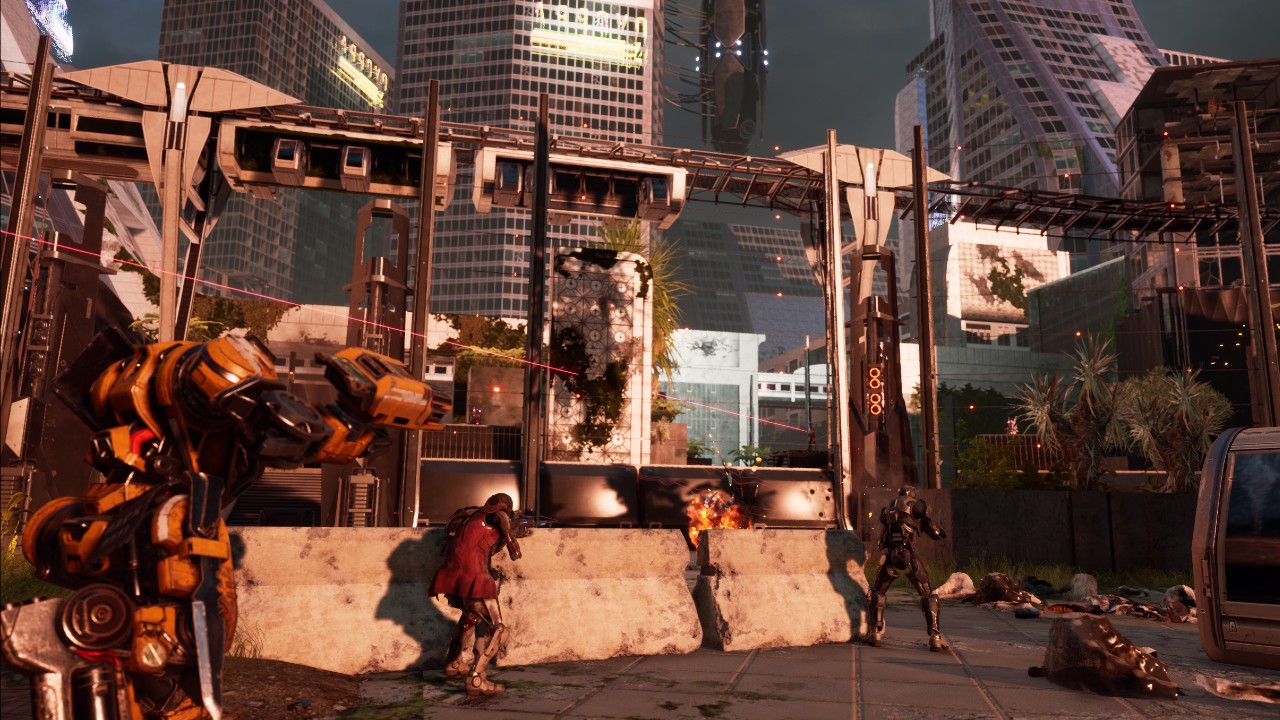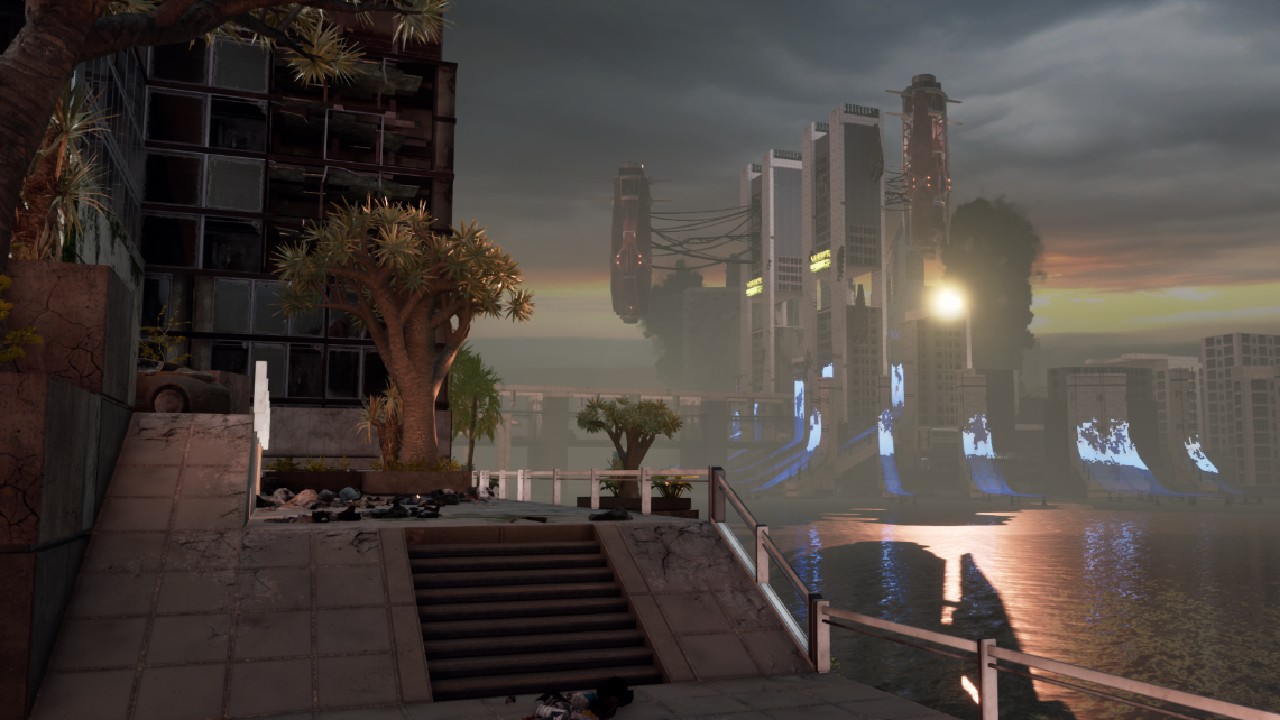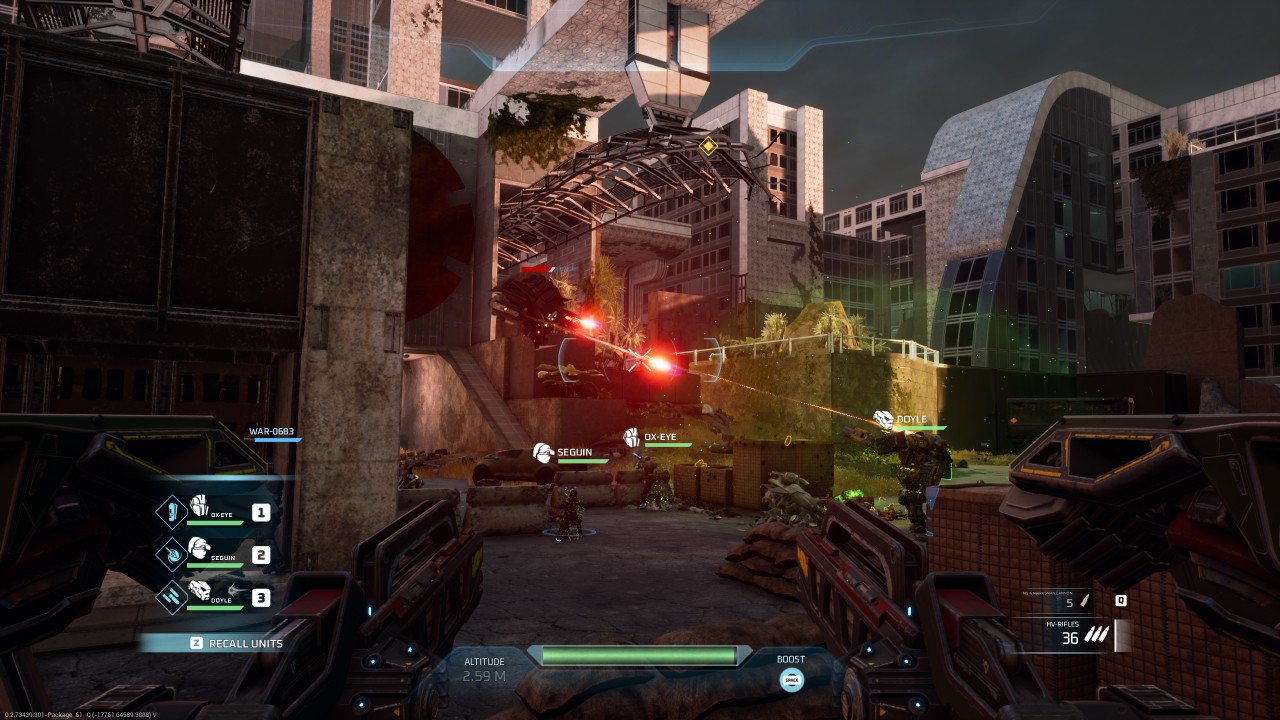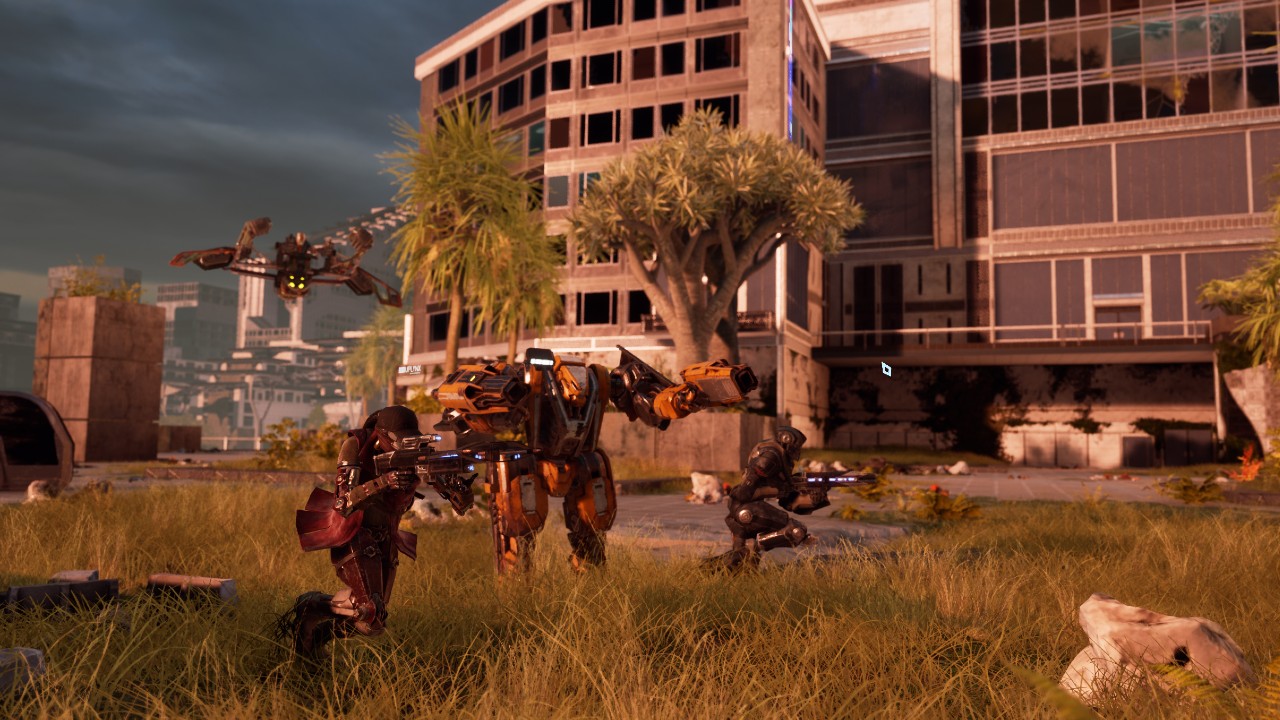Disintegration single player preview: Flying motorcycle combat meets boots-on-the-ground tactics
A deeper look at Marcus Lehto's attempt to rewrite the FPS genre, nearly two decades after Halo: Combat Evolved

"It's kind of a hilarious story, it actually did start out as a real time strategy game," says Marcus Lehto, former Bungie creative director and current head of V1 Interactive, laughing at the similarities between his upcoming game and his magnum opus. "It was pretty much like Myth: The Fallen Lords, one of the first games I worked on at Bungie, which was just straight-up a real-time tactics game."
Marcus Lehto doesn't dream small. Halo: Combat Evolved famously began as a sci-fi real-time strategy IP, where players would control units and vehicles on a 3D field, before it became the icon that would shape all FPS titles in its wake. And, like the earliest iterations of Halo, Disintegration is trying to do something similar: by combining FPS and RTS elements, Lehto believes V1's small team is carving out its own space in the industry. "This is a very different kind of FPS," Lehto insists, "We're putting the player in the first person pilot viewpoint hovering over the battlefield and piloting a grav cycle."
In Disintegration, you play as Romer, a grav cycle (think flying motorcycle) pilot living in a post-humanist world. In combat, you'll control both Romer's vehicle (which has its own set of weapons that vary mission to mission) and a set of troops on the ground. The mechanics are unlike anything I've seen in modern shooters, but Disintegration doesn't want to be just the grav cycle gimmick. Lehto is clearly banking on Disintegration being a successful series, and you can't be one of those without a strong story. "We wanted that single-player experience to be really worthwhile and meaty and have enough there to explore and to create," Lehto insists. "The foundation footprint for this universe that could live well beyond the first installment of this game." We already had a chance to go hands-on with Distengration's multiplayer back in August, and I recently got a virtual preview of the game's campaign and a deeper dive into the rich backstory that drives one of 2020's most intriguing new IPs.
Left hand, meet right hand

Disintegration's gameplay is all about striking a balance. "The grav cycle and weapons are your right hand, the ground crew and accessories are your left hand," Lehto explains. "The bread and butter of the game is understanding how to compete in combat, using your units strategically and figuring out how to master that kind of complex interaction with them."
The mid-game mission from the preview is frenetic with a capital "F," clearly requiring a deft hand that's well-versed in Disintegration's gameplay model. "There's a lot going on in that mission," Lehto admits, "You're given a light grav cycle, which is incredibly vulnerable, and you're given a ground crew that's ready and raring to go. But they are confronted around pretty much every corner." Every mission won't be like that, however, and neither will your grav cycle – you'll get a new vehicle for each mission with a loadout tailored to fit the action that lies ahead, and the same goes for your ground crew too.
In this mission, Romer takes to the air with a ground crew consisting of three character types: Ranger, Warrior, and Striker. The frenzied combat meant the grav cycle was almost always firing, and the ground troops were constantly utilizing their special abilities: the Ranger's slow field, which temporarily slows enemies and projectiles, the Warrior's concussion grenade, and the Striker's mortar strike. At times, killing heavy enemies requires all three special abilities to be activated at once with consistent fire from the grav cycle. You can direct your squad to target enemies, move to a healing zone, or head to an objective – keeping in mind that putting them in danger jeopardizes the mission. A downed crewmember prompts an on-screen mission failure timer – you can't move forward or complete an objective without the entire squad, so if one goes down, you all do.
The frenetic pace I witnessed is going to be found frequently in Disintegration, but it's not reflective of the entire experience. "Some missions are much quieter, much more stealthy in the midst of a ghost town, for instance, in the Midwest, or through the underground bowels of a city," Lehto points out. "So you'll get a variety of different experiences throughout." However, no matter the mission type, you won't get through it without utilising tactics that can keep your grav cycle and squad intact – a far cry from most of the Halo series missions, where a stiff upper lip and a battering ram approach could get you through most firefights, even if you left a smoking Warthog in your wake.
Weekly digests, tales from the communities you love, and more
FPS x RTS

Considering Disintegraton's core cocktail consists of somewhat equal parts FPS and RTS shaken and poured over ice, I'm curious about the target patron here. Bartender metaphor aside, the combination of the two popular game genres could draw an interesting, mixed crowd – or it could alienate fans of one or the other.
"We think that it will have a direct appeal to first-person shooter [fans] naturally, because they can immediately get into that – a lot of my FPS friends who are now streamers and pro players, they've gotten into the tech beta, and they immediately get it," he insists. "But I'm watching them play like 'You're not using your ground units as well as you should be, you're not using them tactically.'" Thus far, Lehto tells me, RTS fans fare a bit differently when trying out Disintegration. "They immediately get the commander part of it," Lehto continues, adding, "And they're a little timid when it comes to a first person shooter aspect."
Lehto does point out that the left hand/right hand dynamic "takes getting used to" but V1 is betting on Disintegration "drawing portions of both crowds." From what I've seen, it looks like FPS fans may be able to get away with brute force in certain Disintegration battles, but not all of them, so they'll have to eventually adapt to the more tactical side. And while RTS fans may struggle to embrace the grav cycle and its guns, the ability to soar out away from trouble while directing your troops forward may provide a welcome reprieve for those trying to get their bearings. However, it's hard to say for sure without having played it, which wasn't possible thanks to the COVID-19 pandemic.
No Master Chiefs here

Disintegration won't be the start of a successful new series without a strong storyline in its campaign, and Lehto is keenly aware of that, gently shunning any suggestions that the game is "multiplayer first" as has been suggested in the past. "The story was the very beginning and genesis of the game in the first place," he says. And that story is an interesting one, especially in the face of current events: 150 years from now, humanity has dealt with climate extremes, food shortages, and global pandemics - "we're not gonna go into that a whole lot today" - and embraced a post-humanist way of living. A large chunk of humanity's survivors have undergone a process called 'integration', which takes their human brain and integrates it into robotic armature.
Despite this, Lehto is quick to point out that the characters in Disintegration are still incredibly human, carrying their personalities and memories with them into their robotic forms. I point out that there's a huge difference between Romer, a charismatic former gearhead TV show host ala Top Gear who decides to integrate to see if it will help ratings, and Master Chief, the monotone monolith of the Halo universe. "One of the things I loved when I first started exploring the fiction for this game is that none of the characters are genetically modified super soldiers," Lehto gushes. "They are all people just like you and me. They're mechanics, they're school teachers, they're reporters, and they're businessmen. They've been thrown into this extreme kind of moment of humanity's existence. And they chose to survive. They chose to kind of adapt and work together to figure out how they were gonna survive."
What I find most interesting in our conversation is just how much Lehto has taken the post-humanist theme and run with it. I ask if one of the ground crew characters from the preview is voiced by Erica Lutrell, the voice of Bangalore in Apex Legends. "I'd have to double check," he wonders, before pointing out that the character in question, Seguin, is non-binary, an identification that fits perfectly in the world of Disintegration. "There's no reason a male couldn't become female or vice versa," Lehto explains, "Or choose what voice they would want to use in their character... There's a lot of really exciting territory to explore."
Ultimately, the characters in Disintegration want desperately to become human again, "to be able to feel a relationship with another human being, or enjoy a meal, or have a beer with another friend," Lehto points out. "They can't do that as a robot anymore". Hopefully the pathos that evokes will drive the story forward, giving Disintegration legs that extend beyond its undeniably unique take on the FPS/RTS genre. We'll have to wait and see.
Alyssa Mercante is an editor and features writer at GamesRadar based out of Brooklyn, NY. Prior to entering the industry, she got her Masters's degree in Modern and Contemporary Literature at Newcastle University with a dissertation focusing on contemporary indie games. She spends most of her time playing competitive shooters and in-depth RPGs and was recently on a PAX Panel about the best bars in video games. In her spare time Alyssa rescues cats, practices her Italian, and plays soccer.



